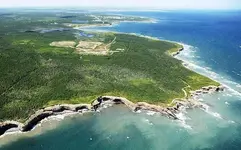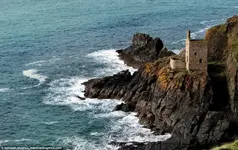Geologically the island is a drumlin. Composed almost entirely of dense glacial till, it is a remnant of the last Ice Age. This till overlies anhydrite bedrock, with which is associated some minor limestone. Anhydrite possesses the dubious property of being exceedingly soluble, more so in salt water than in fresh. Paradoxically Oak Island is the only island in the region to be underlain by anhydrite. On the adjacent mainland, and on other islands in the region, sounder limestones and slates can be found at shallow depth.
…digging the first shaft through dense till into the underlying anhydrite is a simple operation fraught with little peril. But once the excavation fills up with water, drawn into it through systemic seepage paths within the anhydrite, these seepage paths will enlarge progressively. The greater the pumping activity the greater the rate of solution of the anhydrite and, of course, the greater the rate of inflow. Once started it is a vicious circle, and one likely to prove catastrophic as the solution passages enlarge. (Recovering the Oak Island Treasure, Graham Harris, C&G Association Journal, Spring 2002)








